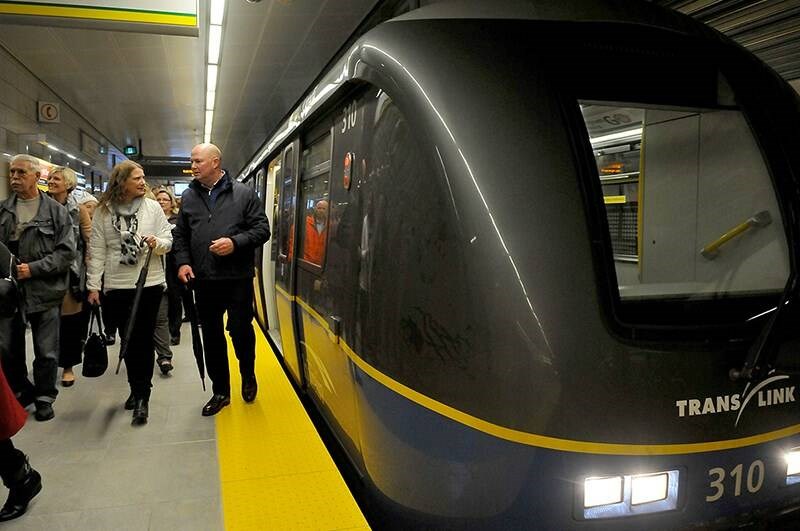Half of the trips taken by Coquitlam residents in 2050 will be by foot, bike, bus, e-Scooter or SkyTrain.
That’s the target in the city’s draft Strategic Transportation Plan (STP) update, of which survey comments will close on July 16.
Since last July, municipal staff have been polling Coquitlam residents about how they get around town and what they need to ditch their car for future journeys.
Jaime Boan, Coquitlam’s general manager of engineering and public works, said the city, Metro Vancouver and TransLink have invested in transportation infrastructure and offered new sustainable modes of travel since the last STP was adopted in 2012.
For example, there are now wider sidewalks and amenities around stations for the Millennium Line, which arrived in 2016, and there are more connections to transit hubs. Last month, Coquitlam also launched its 18-month pilot program with Neuron Mobility and Lime to test out e-Bikes and e-Scooters in the City Centre neighbourhood.
Still, too many people are making the choice to hop into their car rather than opting for a more environmentally friendly way to travel, he said.
And that means Coquitlam likely won’t meet its 2031 goal of having 30 per cent of trips made by foot, bike or public wheels/rail, transportation manager Doug McLeod said at the Strategic Priorities Standing Committee meeting on May 11.
“If we continue to do things as we’re doing and don’t try to achieve a 50 per cent mode-share target, we’re going to have 120,000 more vehicle trips on the road. We just don’t have the space to accommodate; we just can’t keep widening all of our roads.”
If, however, half of the trips are non-vehicular, road congestion in 2050 would be about the same as it is today, which is manageable, McLeod said.
According to the feedback, Coquitlam residents say they want to walk and bike more, but are concerned about road safety.
They also want to take public transit more — if it were more frequent and reliable.
And they would buy an electric vehicle (EV) if the price dropped (EVs are not considered a sustainable mode of transportation and are grouped with gasoline guzzlers, McLeod said).
Meanwhile, between October and December last year, several Coquitlam residents also filled out a Coquitlam Household Travel Survey, similar to the TransLink trip diary, that breaks down how people get around without a car.
The City Centre neighbourhood ranked the highest, with 30.4 per cent of residents walking, cycling or riding an e-Scooter, bus or SkyTrain versus:
- Burquitlam: 28.5%
- Maillardville/Austin Heights: 23.3%
- Westwood Plateau: 18.4%
- Central Coquitlam: 16.5%
- Burke Mountain: 13%
The travel survey also showed that one-quarter of trips are to get to and from work or a post-secondary institution while 46 per cent is for social, recreation, shopping or personal business.
In addition, 40 per cent are trips are under five kilometres and 65 per cent are under 10 kilometres, the survey revealed.
“There’s a lot of opportunity for big change,” McLeod said, reiterating the proposed goals in the draft STP are for a 50 per cent sustainable mode share, zero greenhouse gas emissions and a “Vision Zero” approach to road safety by 2050.
The updated STP is expected to be complete by next spring. To have your say in the survey by the July 16 deadline, go to letstalkcoquitlam.ca/transportationplan.




